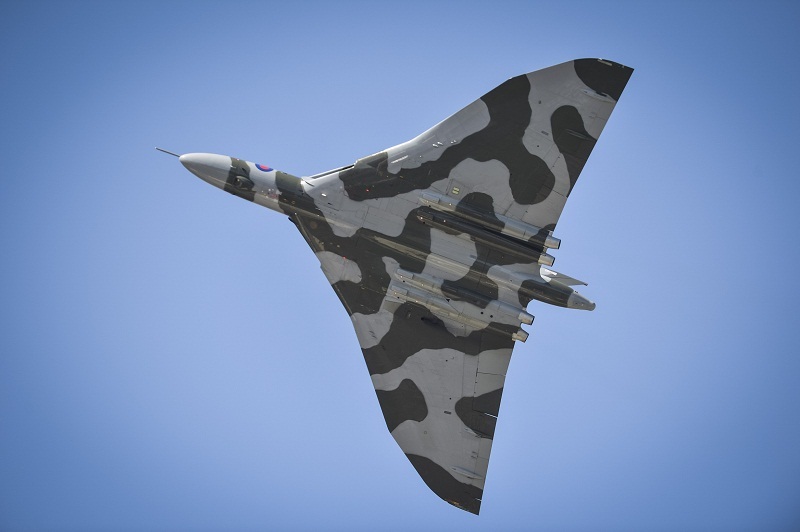
A PILOT who flew a Vulcan bomber on a legendary raid is preparing to say an emotional goodbye to the iconic jet.
Flight Lieutenant Martin Withers flew the Vulcan which spearheaded an offensive to wipe out Port Stanley’s airstrip during the Falklands War.
The last airworthy Vulcan, carrier of Britain’s nuclear deterrent during the Cold War, is being retired from service.
Thousands of fans will be given one last chance to see the mighty plane’s final flight at the Scottish Airshow in Prestwick in a fortnight.
For Martin, it will be an emotional occasion.
“It was a delight to fly,” said Martin, 69, who captained Vulcan 607 on Operation Black Buck, the raid on Port Stanley.
Vulcans were in service from 1956-84 and patrolled the skies at the height of the Cold War, armed with nuclear weapons.
But the delta wing aircraft was loaded with conventional bombs during the raid on Port Stanley in 1982.
Martin flew 8,000 miles from Ascension Island to the Falklands and back, dodging Argentinian-missiles, in the longest non-stop bombing raid in history.
Running desperately low on fuel, despite dangerous mid-air refuelling by a fleet of 11 Handley Page Victor tankers, the Vulcan bombed a 40-yard wide target from 10,000ft.
“It put the runway out of action,” said Martin, who flew with co-pilot Dick Russell. “It was a very close-run thing closer than anyone thought we were very lucky we didn’t lose the aircraft.”
The damage destroyed Argentinian plans to use the runway for jets to attack the British battle fleet.
The daring raid shook Argentinian morale and provoked a disastrous attack against UK forces.
The following day, the Argentine battleship General Belgrano was sunk by a British submarine in one of the key moments of the conflict.
“We achieved so much more than we knew at the time,” said Martin, who lives near York.
“It was only years later that I realised how important it had been.”
He added: “Nobody even considered the Vulcan would be used in that kind of combat but we managed to bomb that runway, much to everyone’s surprise, me included.”
XH558, the last Vulcan still flying, will be at Ayr Beach on September 5, and on the ground at Prestwick Airport the next day.

Enjoy the convenience of having The Sunday Post delivered as a digital ePaper straight to your smartphone, tablet or computer.
Subscribe for only £5.49 a month and enjoy all the benefits of the printed paper as a digital replica.
Subscribe